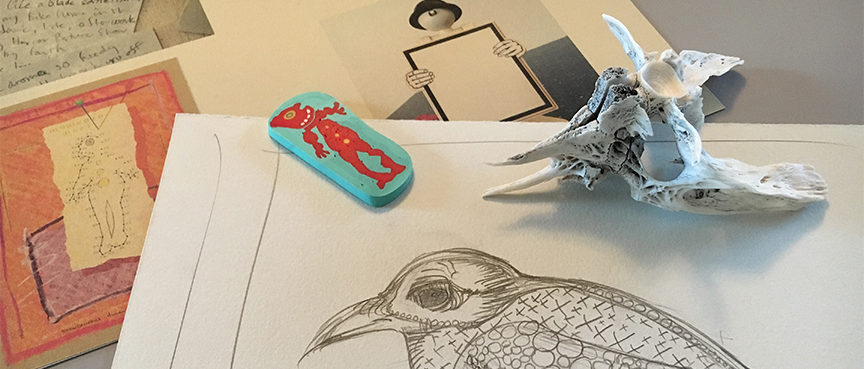Parts of a Traditional Book
Most books share a common structure including some or all of the following features. However, if you are creating your own book you should feel free to use any of these features in any order that seems appropriate to your idea, or use none of them and come up with a completely different idea for your concept of a ‘book.’
Front matter
Endpapers – the decorative papers found when you first open a book, attached to the front cover and the first blank sheet. These should ideally reflect the mood or style of the book.
Blank Sheets – depending on how the book is organized there may be empty sheets in the signatures. These can fall at the beginning of the book, the end of the book or both.
Half Title (Bastard Title) – contains just the title of the book without author’s name or publisher information
Frontispiece – an illustration facing the title of a book. This is placed on the left page (verso) with the title on the right page (recto).
Title Page – the full title page containing the title, author’s name and publisher, if applicable.
Copyright – usually found on the back of the title page and contains the copyright symbol (a ‘c’ inside a circle), the year and the author’s/illustrator’s name.
Dedication – a place to honor individuals, stating that the book is “Dedicated to” followed by a name or names and perhaps a brief statement.
Foreword – often written by someone other than the author, and contains an introduction or set up to the book.
Preface/Introduction – usually written by the author and contains some overview or set up for the book.
Table of Contents – outlines the contents or sections of the book, often by chapter name if the book is divided into chapters.
Body matter
Content – the main content of the book, which may or may not be made up of text. This can be divided into chapters, sections or any other method devised by the artist or author.
End matter
Appendix – additional content sometimes presented as a table, depending on the information being presented. The appendix would contain extra material that might be distracting if contained in the body of the text. The appendix might also contain footnotes so that they aren’t on the pages of the main text.
Glossary – a dictionary or list of definitions that pertain to your subject matter.
Bibliography – a list of references used when researching the material of the book is included, when appropriate.
Colophon – contains interesting details concerning the construction of the book, perhaps including the paper and typefaces used, time of year, mood of the artist, etc.
Blank Sheets – once again, there may be empty sheets in the signatures at the end of a book, depending on how the book is organized.
Endpapers – similar to the endpapers found when you open a book, these are the decorative papers found when you finish a book, attached to the back cover and the first blank sheet.
